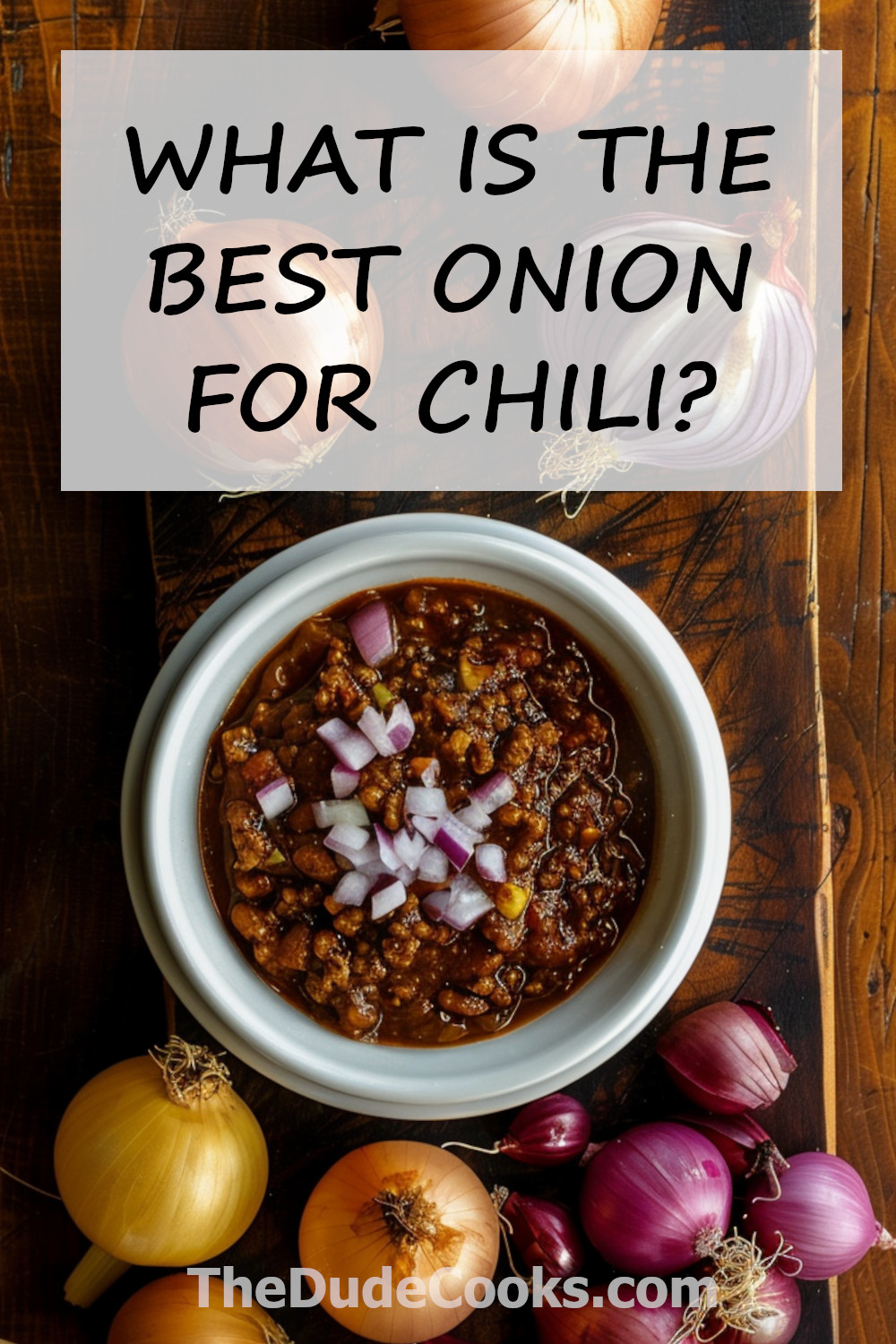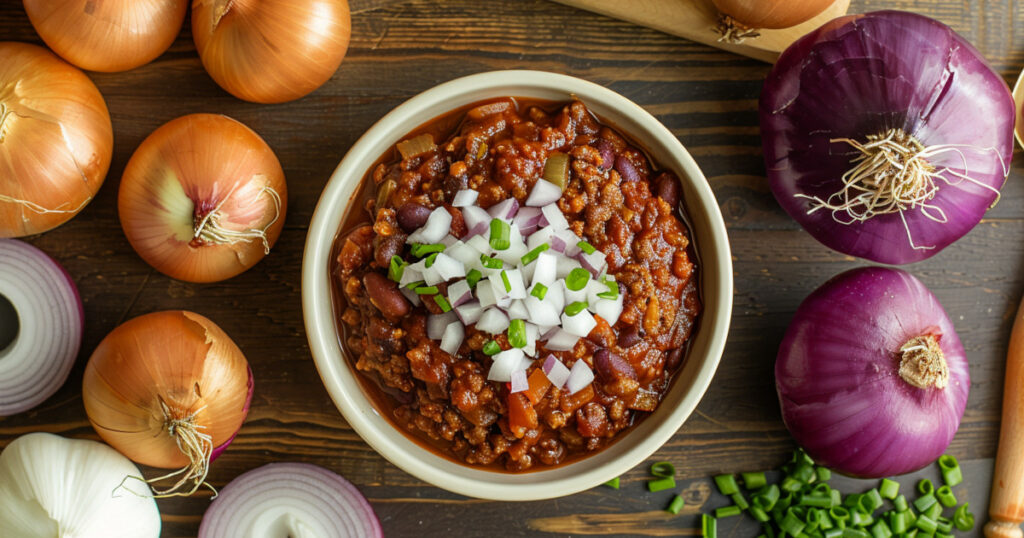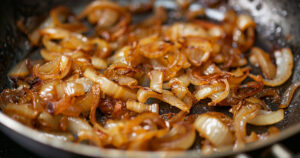Ready to unleash your inner chili champion? Your secret weapon isn’t a rare spice or a fancy technique; it’s the humble onion. But don’t be fooled by its simplicity – the right onion, prepped the right way, can make all the difference between a bland bowl and a flavor-packed fiesta.
Onions: The Unsung Hero of Your Chili Bowl
Think chili is all about the meat and spices? Not quite! While those play a crucial role, the humble onion is the secret ingredient that truly elevates your chili from ordinary to extraordinary.
Each type of onion boasts a unique personality, adding layers of flavor, complexity, and texture to your chili bowl. Imagine the deep, caramelized sweetness of slow-cooked onions melting into your chili, or the sharp, vibrant bite of fresh onions sprinkled on top as a finishing touch. Whether you prefer one or the other (or both!), understanding how to use different onions is your key to unlocking chili perfection.
Ready to dive into the delicious world of chili onions? Let’s explore the different varieties, learn how to prep them like a pro, and discover how they can transform your next batch of chili.
The Impact of Onions on Chili’s Taste and Texture
Onions aren’t just a side note in chili; they’re a game-changer! With a variety of onion types to choose from, each with its own unique flavor profile and texture, the possibilities are endless. Do you prefer the caramelized sweetness of onions cooked low and slow, or the sharp bite of fresh onions sprinkled on top? Whether you’re a chili newbie or a seasoned pro, understanding how to use different onions is key to unlocking a whole new level of flavor in your chili.
Onions on your chili or in your chili
There are two primary ways to incorporate onions into your chili, each influencing the final dish in distinct ways:
- In the Chili: When cooked within the chili, onions release their natural sugars, contributing to a mellower, sweeter flavor profile. They soften and blend seamlessly with the other ingredients, adding depth and complexity without a pronounced onion flavor. This method also influences the texture of the onions, transforming them from crisp to tender.
- On the Chili: Using raw onions as a topping provides a contrasting texture and a sharper onion flavor. The raw onion’s crispness and pungency offer a refreshing counterpoint to the rich, savory chili. In terms of aesthetics, raw onions add a pop of color and visual interest to the dish, making it more appealing.
The decision of whether to cook onions into your chili or use them as a topping depends entirely on your personal preference. Experiment with both methods to discover which one best suits your taste buds.
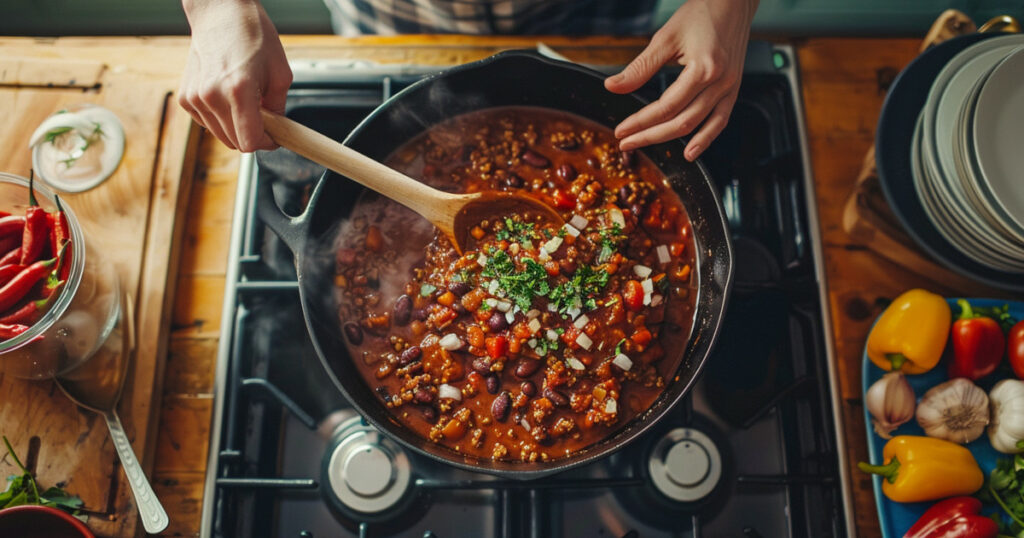
The Three States of Onion in Chili: Flavor, Texture, and Beyond
Now that we’ve covered the basic placement options for onions in chili, let’s explore how different cooking methods can transform their flavor, texture, and overall impact on your dish.
- Raw: Adds a sharp, pungent bite and a crisp texture. Ideal as a topping for a pop of freshness and color.
- Sautéed: Mellows the onion’s flavor, bringing out its natural sweetness. Sautéed onions blend seamlessly into chili, adding depth and richness.
- Caramelized: A slow-cooked, gourmet option that results in deeply caramelized onions with a complex, sweet, and savory flavor. Ideal for adding depth and a touch of luxury to your chili.
Each of these states offers a unique contribution to your chili. By understanding the nuances of each preparation, you can make informed decisions to create a chili that perfectly matches your taste preferences.
Understanding Onion Varieties and Their Flavors
Choosing the right onion for your chili is like selecting the perfect spice – it can make or break your dish. Each of the different varieties of onions boasts a unique flavor profile, impacting not only the taste but also the aroma, texture, and overall experience of your chili. Let’s delve into the diverse world of onions and explore how each variety can elevate your chili game.
What are the best onions for chili?
The best onion for chili depends on your preferred flavor profile. Yellow onions are a versatile choice for a classic chili flavor. White onions offer a milder taste, while sweet onions add a touch of sweetness. Red onions provide a colorful twist with a slightly sweet and peppery flavor. Scallions bring a fresh, mild onion flavor, while shallots add a delicate sweetness and a hint of garlic.
Yellow Onions: The Versatile Champion
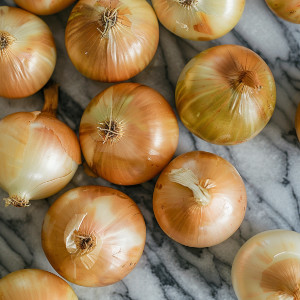
The workhorse of most kitchens, yellow onions are the classic choice for chili. Their sharp, pungent flavor mellows beautifully when cooked, adding depth and savory notes to your chili. Their versatility shines whether diced and sautéed at the start of cooking or added raw as a final garnish for a bit of bite.
Best for: Both cooking into the chili and using as a topping.
White Onions: The Mild & Crisp Contender
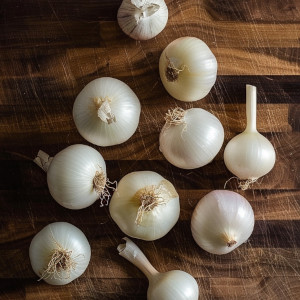
Slightly milder and sweeter than yellow onions, white onions offer a clean, crisp flavor that won’t overpower your chili. Their texture holds up well during cooking, making them an excellent choice for slow-cooked chilis.
Best for: Cooking into the chili, especially for those who prefer a milder onion flavor.
Sweet Onions: The Gentle Giant
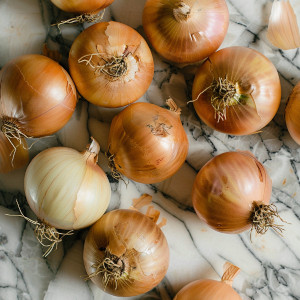
Varieties like Vidalia or Walla Walla onions bring a subtle sweetness to the table. Their low sulfur content means they’re less likely to cause tears and their delicate flavor won’t overwhelm the other ingredients in your chili. The debate on whether Vidalia sweet onions are better than Walla Walla sweets is a whole post on its own.
Best for: Using raw as a topping or lightly caramelized and stirred into the chili for a touch of sweetness.
Red Onions: The Colorful Showstopper
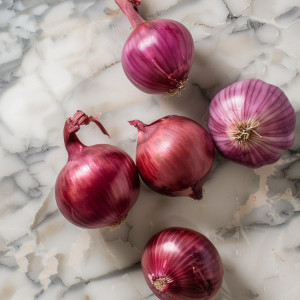
Red onions boast a vibrant hue and a slightly sweet, peppery flavor. They add a beautiful pop of color when used as a topping, and their flavor mellows when cooked, making them versatile for both uses.
Best for: Both cooking into the chili and using as a topping, especially when a touch of sweetness and vibrant color is desired.
Scallions (Green Onions): The Fresh & Zippy Option
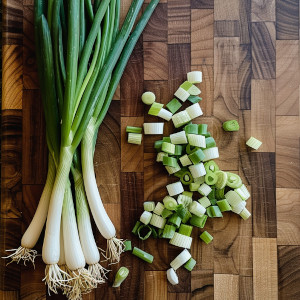
With their milder flavor and crisp texture, scallions are perfect for adding a bright, fresh finish to your chili. Their vibrant green color also makes them a visually appealing garnish.
Best for: Using raw as a topping for a burst of fresh flavor and a splash of color.
Shallots: The Gourmet’s Choice
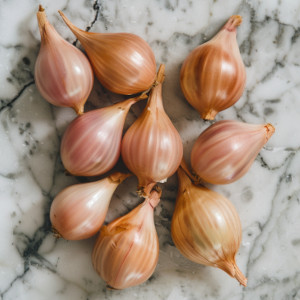
Shallots offer a delicate balance of sweetness and sharpness, with a hint of garlic that adds complexity to your chili. Their unique flavor profile makes them a favorite among chefs and adventurous home cooks.
Best for: Both cooking into the chili for a subtle depth of flavor and using as a topping for a more refined taste.
How to Prepare Onions for Chili
Now that you’ve got the lowdown on the different onion varieties, let’s dive into how to prep them for chili perfection. There are two key stages to consider: how you chop them and whether you sauté them.
These steps might seem simple, but they have a major impact on your chili’s final flavor and texture. So grab your cutting board and let’s get chopping!
Chopping Your Onions:
No matter which preparation method you choose, proper chopping is key.
- Size Matters: The size you chop your onions directly affects the texture of your chili. For a hearty bite, go for a larger dice. Prefer a smoother consistency? A fine mince is the way to go. Keep in mind that uniform cuts ensure even cooking and flavor distribution.
- Knife vs. Chopper: A sharp knife gives you precision, but if you’re worried about tears (or just want to save time), an onion chopper is your friend. Choppers make quick work of onions, delivering even cuts with minimal effort. Plus, they help contain the onion’s volatile compounds, reducing those pesky tears.
- Experiment & Find Your Balance: Play around with different chopping styles and tools to find what you like best. There are no hard and fast rules – it’s all about finding the texture that complements your chili creation.
Sautéing Your Onions:
- Flavor Booster: Sautéing onions is like unlocking a secret flavor code. By cooking them gently in oil or butter, you caramelize their natural sugars, creating a richer, sweeter base for your chili.
- Melting Pot Magic: As the onions soften, they meld with other ingredients like ground beef, creating a harmonious flavor explosion. The caramelization process adds depth and complexity, turning a simple pot of chili into a savory masterpiece.
- Texture Transformation: Sautéed onions become tender and melt-in-your-mouth, adding another layer of satisfaction to your chili experience.
Caramelized Onions: The Gourmet Touch
- Flavor Alchemy: Caramelizing onions is a culinary magic trick. By slowly cooking them over low heat, you transform their natural sugars into a symphony of deep, complex sweetness.
- Umami Unleashed: As the onions brown and soften, they develop a rich, savory umami flavor that adds a whole new dimension to your chili.
- Luxurious Texture: Caramelized onions melt into the chili, creating a luscious, velvety texture that’s pure indulgence.
- A Flavorful Investment: While caramelizing onions takes time, the payoff is huge. Their depth of flavor and luxurious texture are worth the wait.
Whether you’re a chop-and-go type or prefer the slow dance of sautéing, the way you prep your onions is a crucial step in creating chili that’s truly unforgettable.
Can you substitute onion powder for fresh onions in chili?
Yes, you can substitute onion powder for fresh onions in chili. Onion powder is a convenient alternative if you don’t have fresh onions or are short on time. However, onion powder is more concentrated than fresh onions, so you’ll need to use less. Start with a smaller amount and adjust to your taste preference. For the best results, add onion powder during the cooking process to allow the flavors to blend.
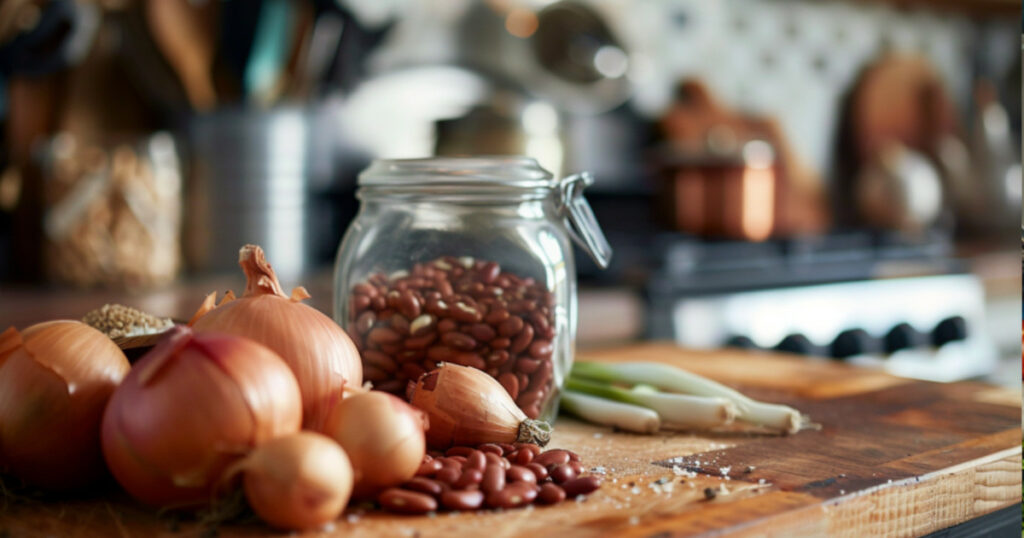
The Final Word on Chili Onions
So, the next time you’re whipping up a batch of chili, don’t underestimate the power of the humble onion. Whether you choose the classic warmth of yellow onions, the sweet surprise of Vidalias, or the peppery punch of red onions, the right variety and preparation can truly elevate your chili game.
Remember, the best onion for chili is ultimately the one you love best. So don’t be afraid to experiment with different types, chopping styles, and cooking techniques.
Now that you’re armed with this onion knowledge, go forth and create chili masterpieces that’ll have your friends and family begging for seconds (and the recipe!).
